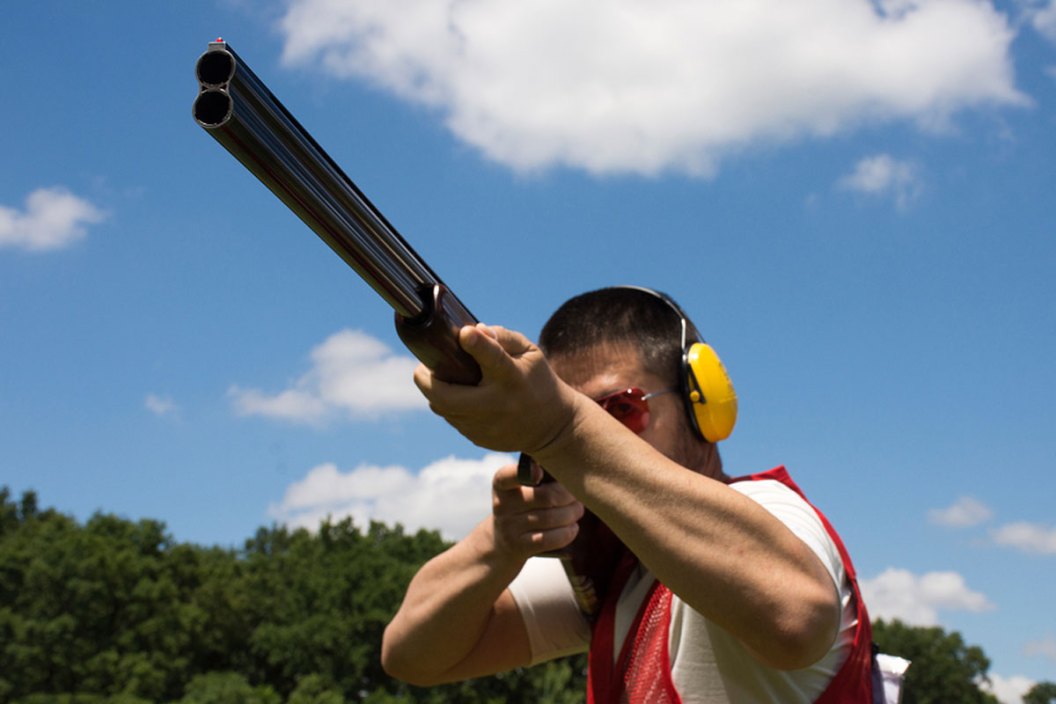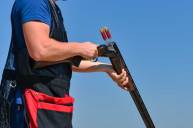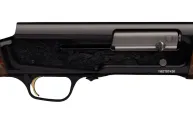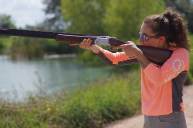The difference between trap and skeet is a very common question.
Trap and skeet shooting. You've probably heard these terms before. But if you haven't participated in these shooting sports before, you might be confused about the differences between them.
They are incredibly similar. Both shotgun games were developed to mimic bird hunting and have since turned into contests designed to test the marksmanship of the world's best shooters. These games have even made it into the Olympics.
Here are the main differences between trap and skeet and why you should consider taking up these clay pigeon sports this year.
Trap, skeet and sporting clays
For the purposes of this article, we're not going to get into sporting clays here for two reasons. One, we have an extensive guide to sporting clays that you can read here. Two, in the world of clay pigeon shooting, sporting clays is different enough that it's easily distinguished from the other two shotgun sports. We're only mentioning it because it's a very popular form of clay shooting and is always in the discussion with trapshooting and skeet.
Trap
There is a lot of confusion in these shotgun shooting disciplines because they are so similar. We'll start with trap shooting. The big difference is in target presentations and the number machines throwing the clay targets. With this style of shooting, the trap house is positioned to launch the targets away from the shooting stations and the shooter.
There are a few different disciplines of trap. Singles is just as it sounds, one shooter. In this game, the shooter stands 16 yards from the trap house. In a large competition, shooters are placed into groups of five people called "squads." On each trap shooting course are five different shooting positions. Each one is going to give the shooter a different look at the clay targets as they leave the thrower. Shooters get five shots per position. Twenty-five shots are equal to one round.
In a competition, there are four different trap fields. The slang term for each field is a "bank." You've completed the competition when you've shot at all four banks. So, you'll be shooting up to 100 rounds during a normal competition.
In 1911, the concept of "double trap" was introduced. This game as just as it sounds: two targets are thrown from the trap machine at the same time. In 1996, doubles made its Olympic debut. The variable in this game is that the machine moves back and forth, and you won't know what angle it will be coming from until the bird is in the air. Wobble trap is another variant that adds even more variables by having the trap machine move up and down as well as side to side.
One of the most popular trap games is handicap. If you think that sounds like golf, you're not far off. Shooters are assigned different shooting distances based on their skill level to even the playing field. There are other variations to the game with more targets, but these are the basic ones. You get credit for a "dead" target when you either shatter or break a piece off. A miss is marked as "lost." At the end the scores are totaled.
Trap is a simple game with origins in England in the late 1700s. It was originally developed to practice for hunting and often used live birds. Obviously, times have changed. In American Trap, the target is flying at 42 miles per hour, but you'll often hear Europeans say the American version is too easy. They like to launch targets much faster, sometimes at 50 miles per hour or more!
Skeet
This game is very similar to trap, but the targets here are moving from side to side instead of away from the shooter. You've probably seen a skeet field before with the two sheds or "houses" on either side. In similar fashion to trap, skeet competitions see "squads" of five shooters. Skeet uses the same scoring terms of "dead" and "lost" to designate between hits and misses.
Skeet shooting mixes things up a little in a round of 25 targets because eight of those targets are shot as doubles. Describing the sequence of a round is a little confusing. So, here is the sequence of a round of skeet as quoted from the National Skeet Shooting Association's website:
- Stations 1 and 2: High house single; Low house single; High house/Low house pair
- Stations 3, 4, and 5: High house single; Low house single
- Stations 6 and 7: High house single; Low house single; Low house/High house pair
- Station 8: High house single; Low house single
If you're still confused, you can see exactly what that means in the video above. Of the two forms of clay target shooting, skeet is the more American of the two. Surprisingly, this sport is only reaching its 100th birthday. Avid grouse hunters Charles Davis and Harnden Foster developed it in Massachusetts in 1920.
Skeet officially made its Olympic debut in 1968. One interesting fact about both skeet and trap at the Olympics is that for decades, both were open events. That meant men and women competed against each other until separate divisions were added. In the case of skeet, that didn't happen until the year 2000! One woman, Zhang Shan impressively out-shot everyone (both male and female) to bring home the gold medal to China in the 1992 games.
Since then, Kim Rhode has become a legend in Olympic skeet and trap for the United States. She's racked up medals at the last six summer Olympic games and six National Titles.
Guns for skeet and trap
If you've ever watched an Olympic competition of either sport, you probably noticed the high-grade Beretta and Browning over-and-under trap guns many competitors use. Yes, shooters at the elite levels of the sport do use some seriously fancy (and expensive) shotguns.
But you don't need to drop $2,000 on a Browning Citori to get started. In truth, you could start out with a simple classic like a $300 Remington 870 or Winchester 1300 pump-action. Some shooters use semi-automatics and some even use side-by-sides. In fact, we even recommend you start small like this, just to make sure you enjoy the sports before you get too serious.
Oh, one word on etiquette here. If you're using a pump or semi-auto, invest in a shell catcher to attach to your gun. This just ensures your spent shells aren't flying into someone's face at a competition.
The two most popular gauges are 12 and 20, but we've heard of people using guns as small as .410 for skeet. Mostly, it's a personal preference type of thing. If you're joining a gun club, be sure to ask about shot or choke limits, as these may vary from club to club.
If you're going to get serious about either sport, it's worth looking into reloading equipment. As we've already noted, going through 100 shells for a game of trap can get expensive if you're doing it every weekend. Reloading is a good way to cut those costs a little. Plus, you'll learn a cool new skill that will help save you money for your other hunting or shooting activities.
Why shoot trap and skeet?
Well, if you're a bird hunter, the answer to this question is obvious. It's great practice and it will help you put more birds in the freezer, but we also like skeet and trap for introducing people new to firearms. It's a safe and friendly environment to learn gun safety.
Both sports are also quite challenging when you first start out. They're a good way to really practice the fundamentals and build your shooting discipline. Shooting trap and skeet won't just help with your shotgun skills, it will make you a much better shooter overall, even if the fundamentals of shooting a shotgun at clay targets are different than a rifle at a paper one. You will learn better control and better sighting from trap and skeet.
We should mention here, these two sports are really taking off in schools across the nation. I have a second freelance job writing for a small-town newspaper and one day my editor asked me to take a photo of the trap team. I was shocked when I walked into the gym to see nearly 100 kids of varying ages there waiting for their photo. If you have kids, it's a good way to spend time with them and get them involved in the shooting sports. It will also teach them gun safety skills they can use for life.
The last reason to try it is simply because it's fun. In many instances, people from varying skill levels can compete with one another and anyone can win. It's part of what makes the sports so exciting. Plus, you'll likely make a lot of new friends. We suggest giving it a try this year, you might be left wishing you had started sooner!
Products featured on Wide Open Spaces are independently selected by our editors. However, when you buy something through our links, we may earn a commission.
For more outdoor content from Travis Smola, be sure to follow him on Twitter and check out his Geocaching and Outdoors with Travis Youtube channels.
NEXT: SHOOTING SPORTING CLAYS AND WHY IT'S MAKING YOU BETTER





